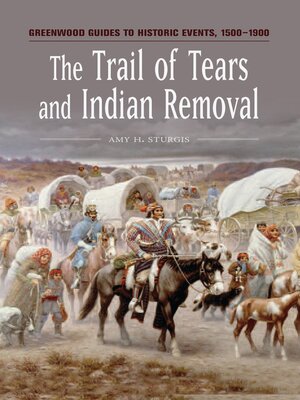The Trail of Tears and Indian Removal
ebook ∣ Greenwood Guides to Historic Events 1500-1900
By Amy H. Sturgis

Sign up to save your library
With an OverDrive account, you can save your favorite libraries for at-a-glance information about availability. Find out more about OverDrive accounts.
Find this title in Libby, the library reading app by OverDrive.



Search for a digital library with this title
Title found at these libraries:
| Library Name | Distance |
|---|---|
| Loading... |
In 1838, the U.S. Government began to forcibly relocate thousands of Cherokees from their homelands in Georgia to the Western territories. The event the Cherokees called The Trail Where They Cried meant their own loss of life, sovereignty, and property. Moreover, it allowed visions of Manifest Destiny to contradict the government's previous civilization campaign policy toward American Indians. The tortuous journey West was one of the final blows causing a division within the Cherokee nation itself, over civilization and identity, tradition and progress, east and west. The Trail of Tears also introduced an era of Indian removal that reshaped the face of Native America geographically, politically, economically, and socially.
Engaging thematic chapters explore the events surrounding the Trail of Tears and the era of Indian removal, including the invention of the Cherokee alphabet, the conflict between the preservation of Cherokee culture and the call to assimilate, Andrew Jackson's imperial presidency, and the negotiation of legislation and land treaties. Biographies of key figures, an annotated bibliography, and an extensive selection of primary documents round out the work.
Engaging thematic chapters explore the events surrounding the Trail of Tears and the era of Indian removal, including the invention of the Cherokee alphabet, the conflict between the preservation of Cherokee culture and the call to assimilate, Andrew Jackson's imperial presidency, and the negotiation of legislation and land treaties. Biographies of key figures, an annotated bibliography, and an extensive selection of primary documents round out the work.







